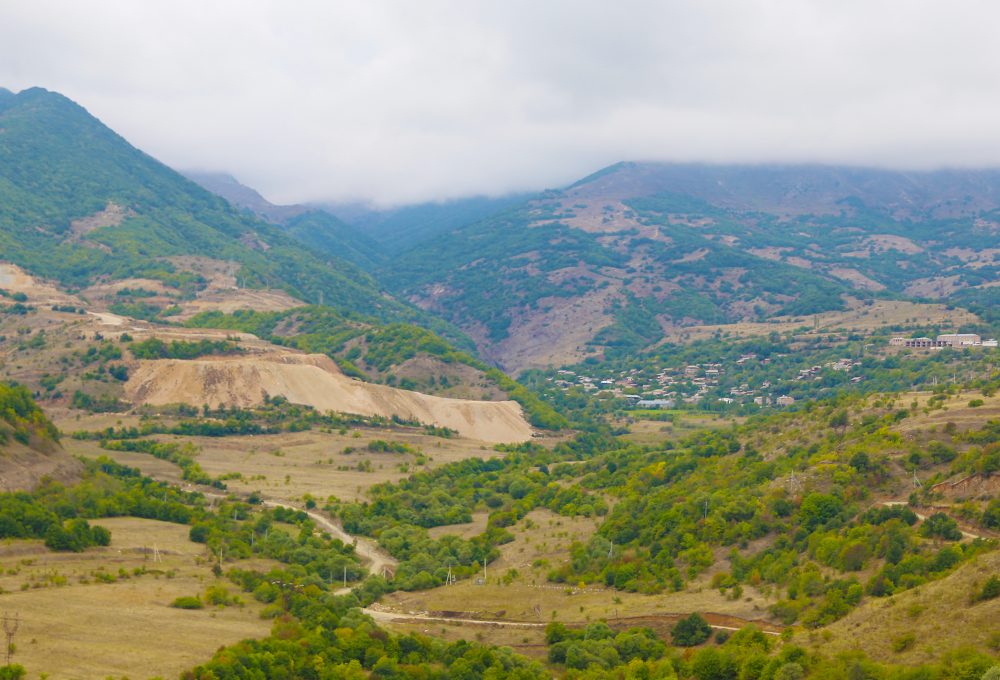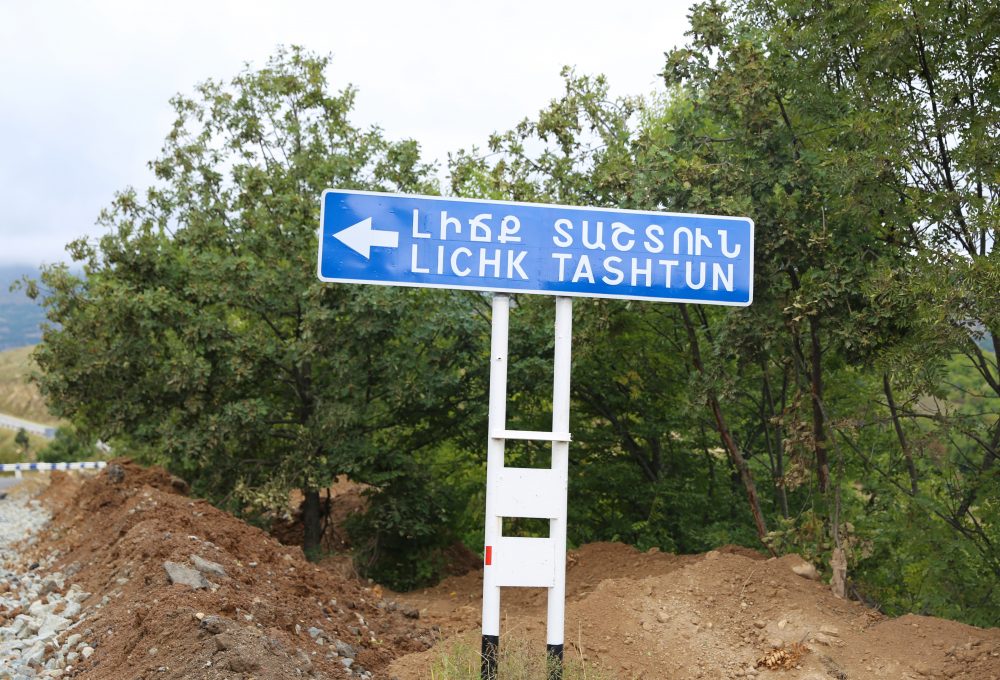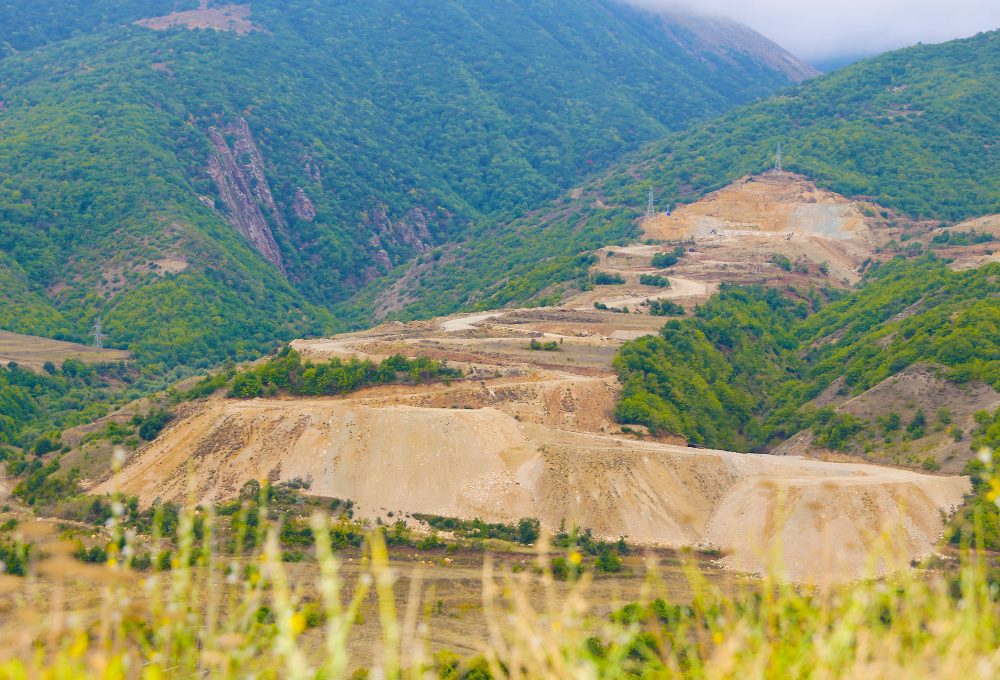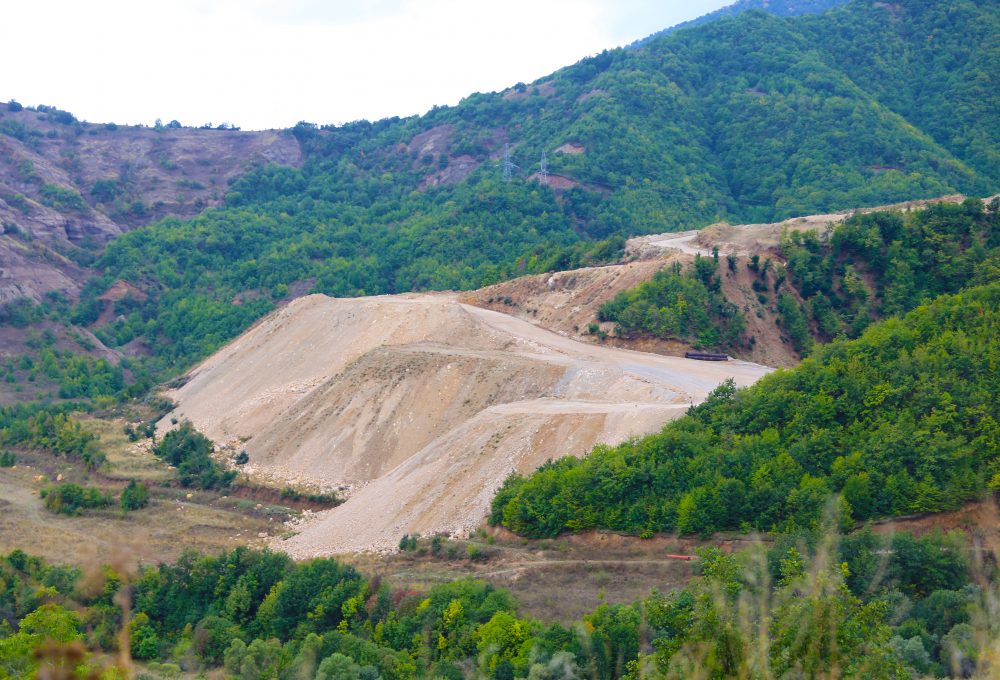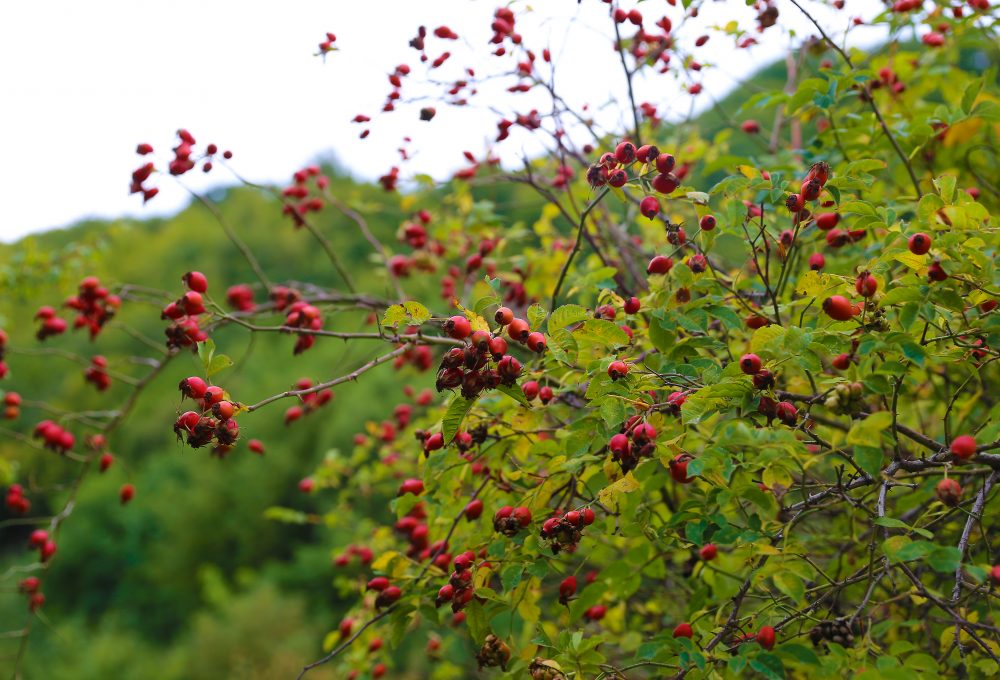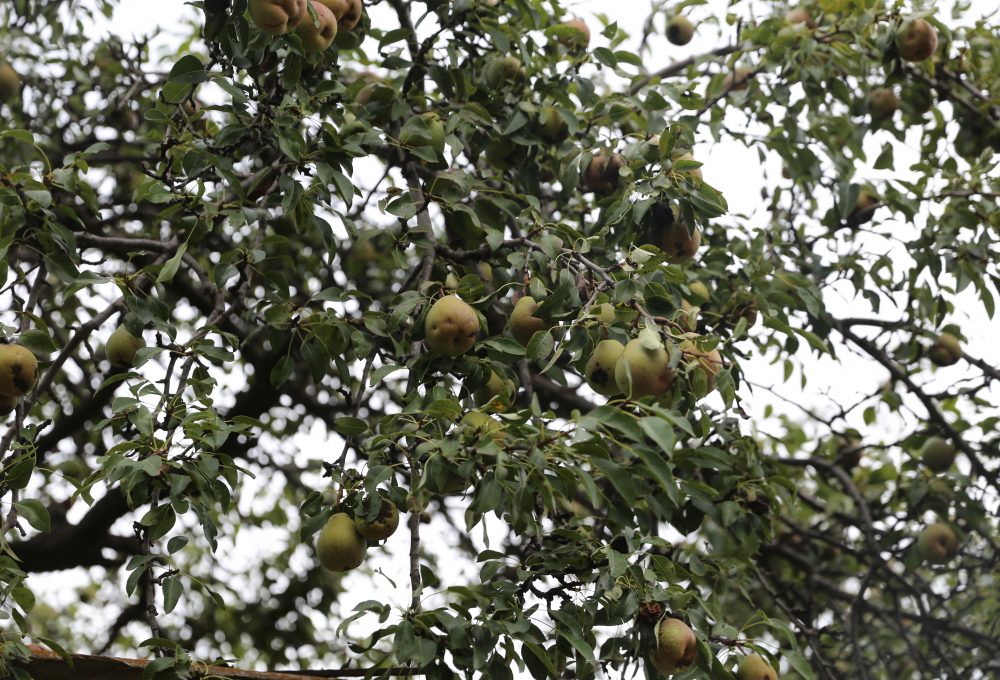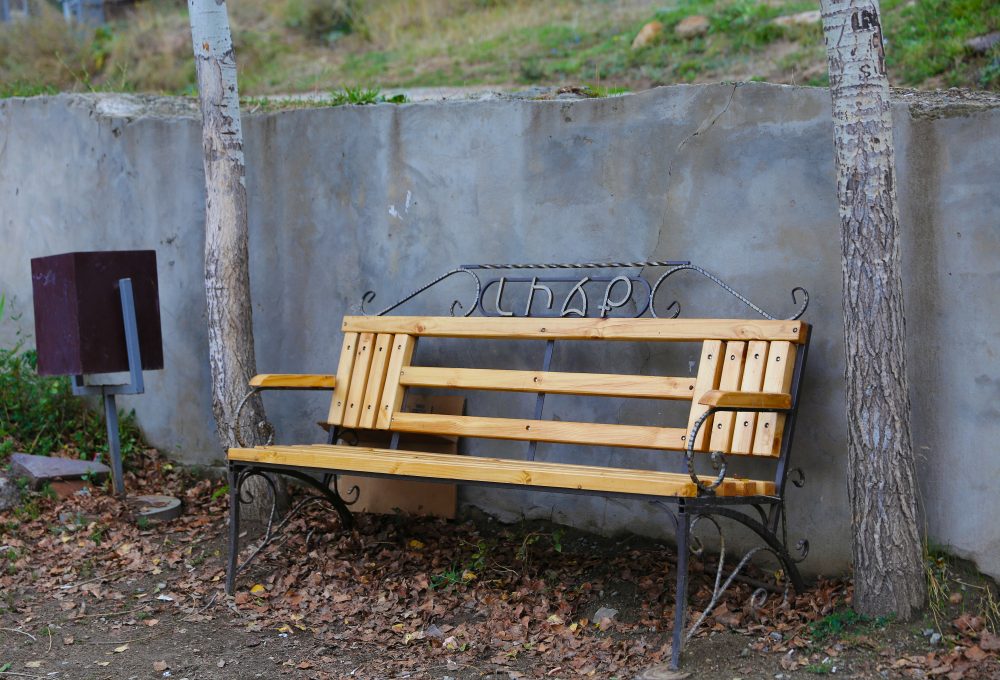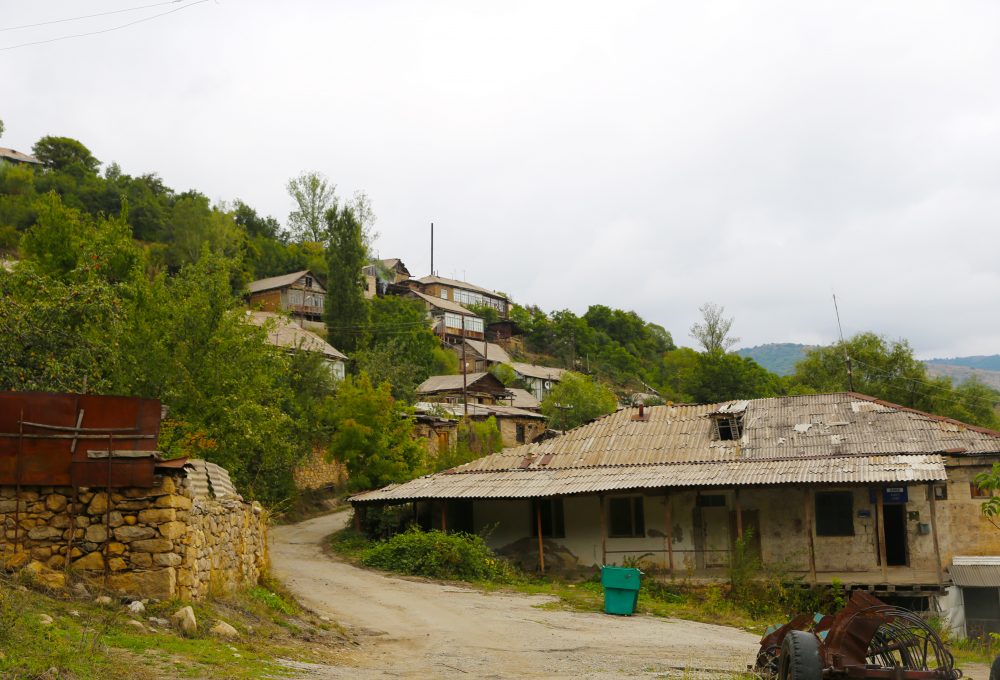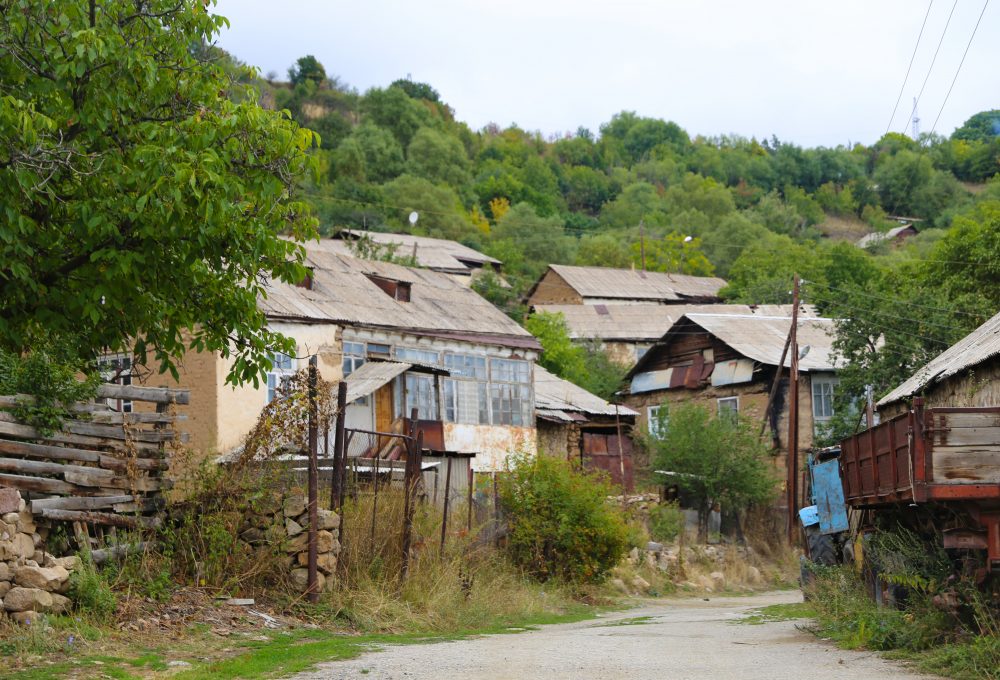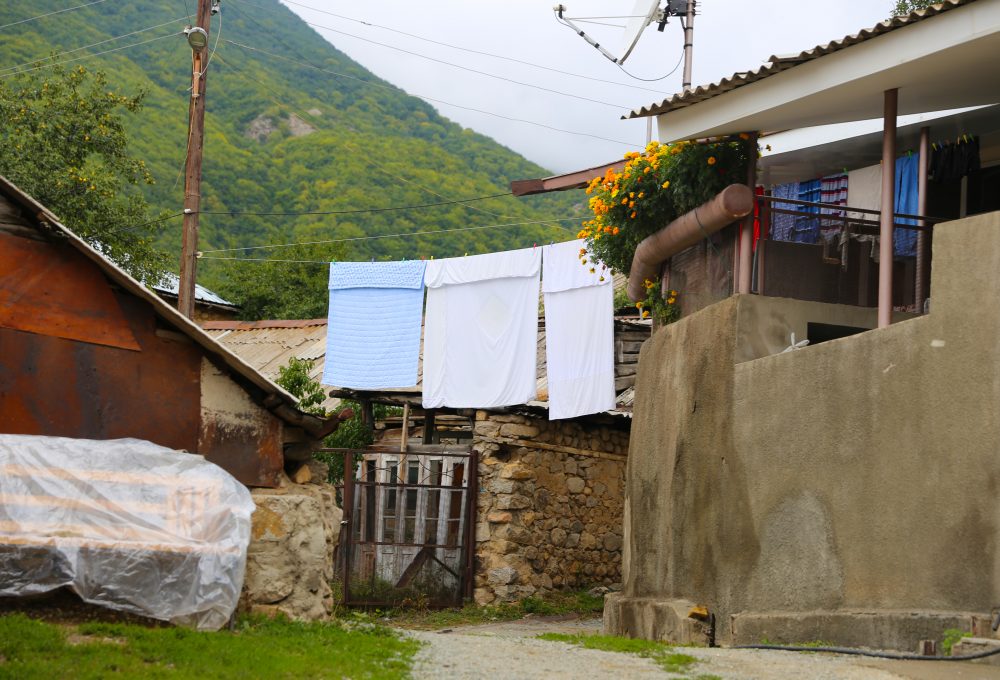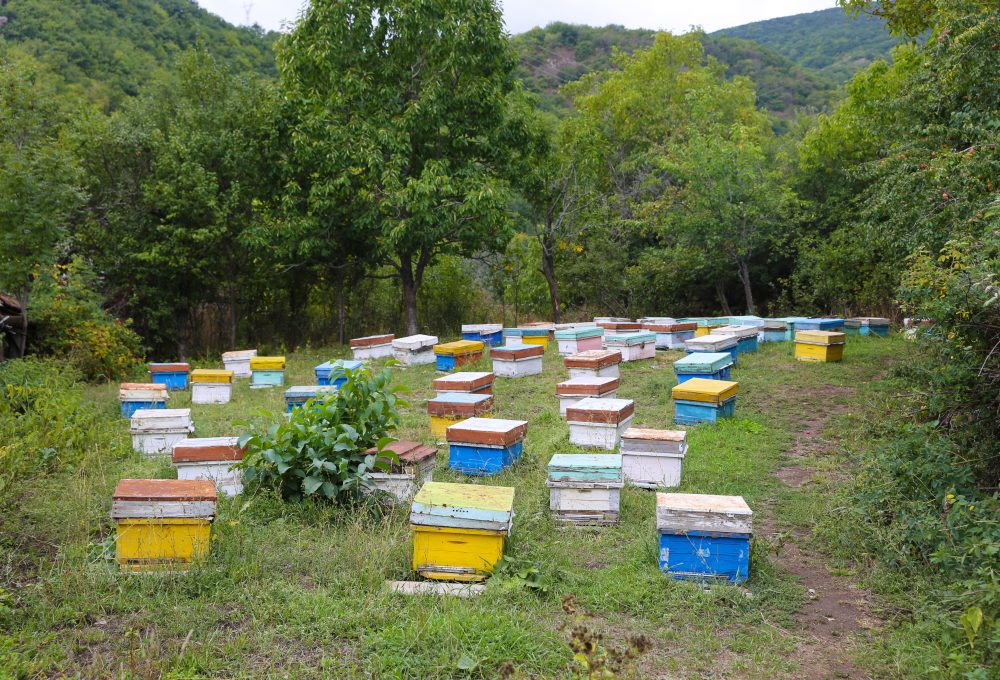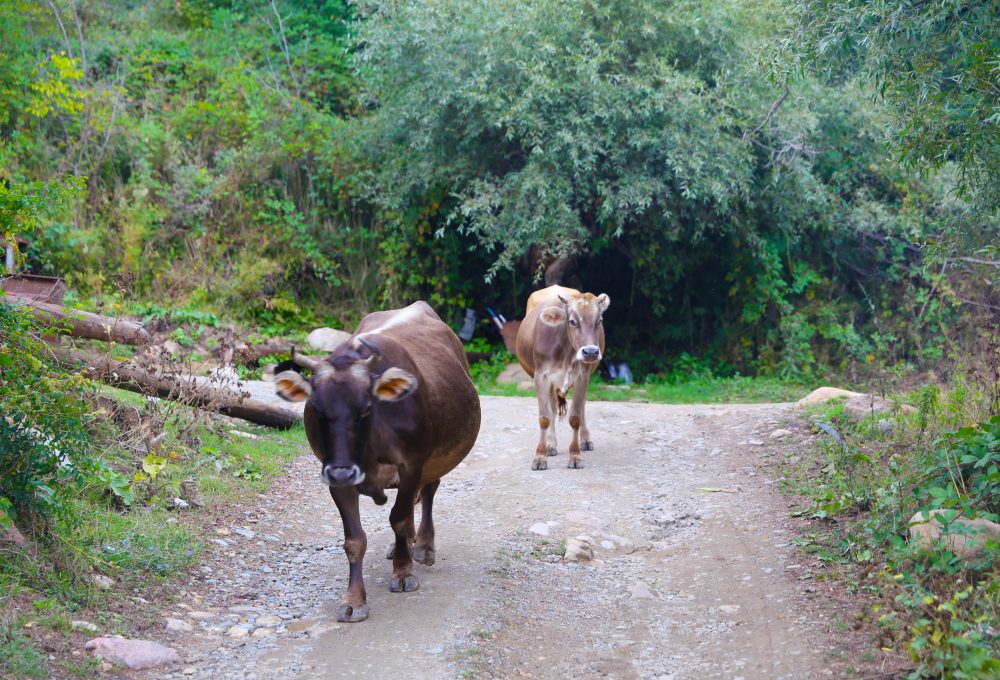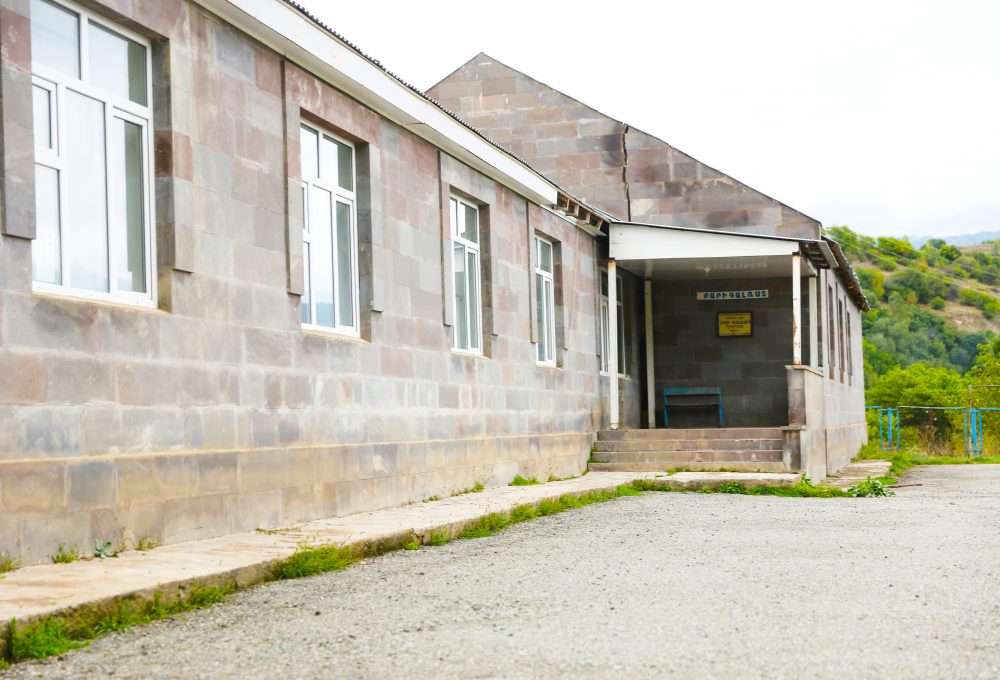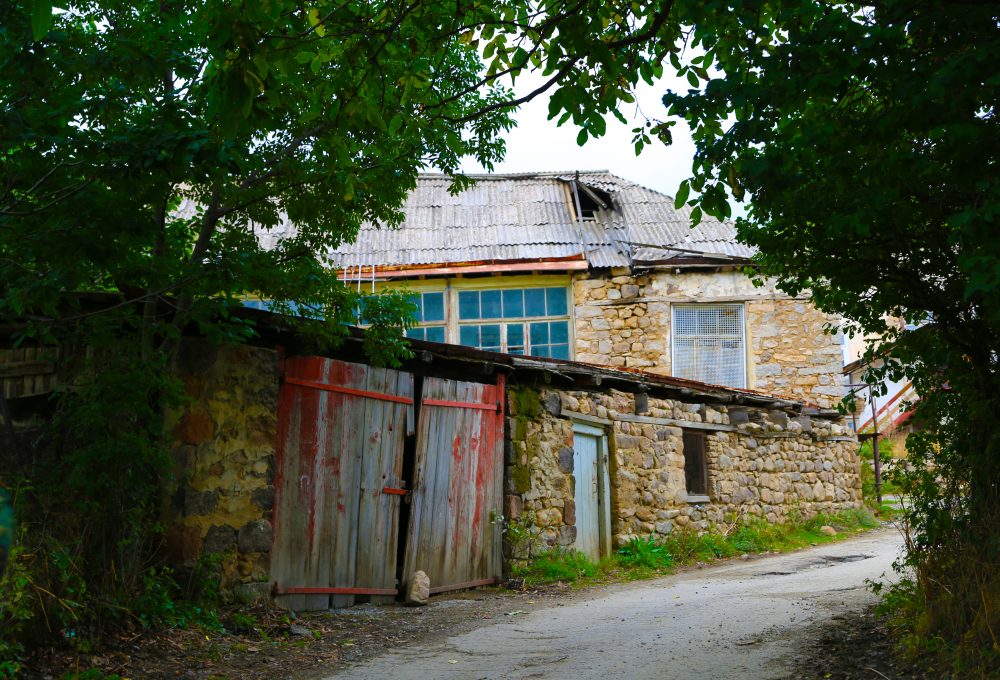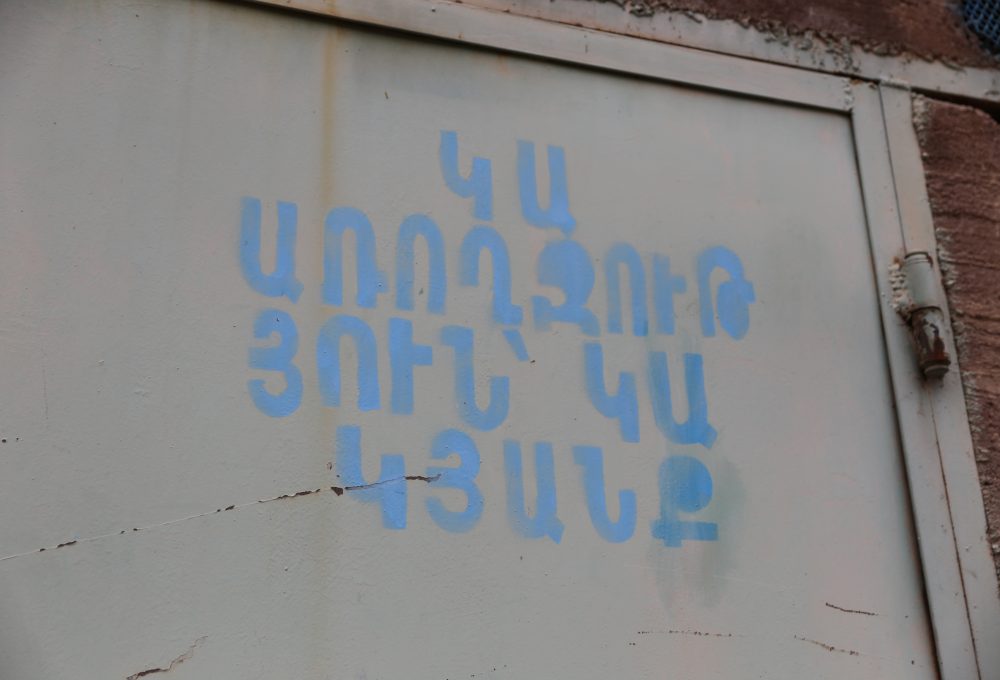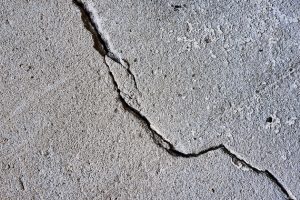Lichk mine is located 300 metres far from the homonymous Lichk village and 24 km far from Meghri town. It is already more than a year since the mine operation has been suspended.
The three-year old mine has never been fully exploited.
The reason for cessation of the work is not that clear. However, a few days before the work suspension, on May 19, 2018, the Ministry of Environment (now` Nature Protection) permitted “Tatstone” LLC (company operating the mine) to build a 110 kV high-voltage overhead line and substation in the Lichk mine. While in January 2019, the company applied to the Water Resources Management Agency of the same Ministry for a 2.09 l/s water abstraction permit and was refused.
Residents of the mentioned area think that cessation of the work is connected with Prime Minister (PM) Nikol Pashinyan’s live announcement on Facebook on May 22, 2018. In his speech PM mentioned that commissions will be made at metal mines, the reason of which are numerous alerts on mine activity.
During the whole year “Tatstone” LLC has not provided any groundings on work cessation. There is no activity in the mine area. Only security guards walk around the territory.
Since the start of preparation works for Lichk mine, 2016, Meghri residents have been complaining of the location of Lichk Mine. It is located in an area which may have a negative impact on the environment and people living near there. “Arevik” National Park, “Boghakar” Reserve, Meghri River and its tributary Ayrijur (Zvartaget), as well as the Meghri water distribution system are located around the mine.
The Ministry of Nature Protection first responded to the complaints of Meghri residents in Spring 2018, before the Velvet Revolution. The respond ran that concerns are in vain as the residential sector of the Lichk village is 300 metres far from the mine. The ministry assured that the explosions of the mine could not be dangerous for the inhabitants, because a natural barrier will be formed between the settlement and the blast sites in parallel with the mountain work deepening.
As regards the rivers, the Ministry of Nature protection assures that they are quite far from the mine – 180 metres and 220 metres. And the fresh water basin is above the mine (not mentioned how far). The waterline passing through the mine runs through a pipeline, which reduces the risk.
However, Meghri residents are not satisfied with the claims. They say that another company which previously wanted to exploit the mine, refused to operate the mine, assessing the magnitude of potential environmental damage. At current the mine is stripped. According to the studies of Armenian Environmental Front carried out in March 2019, the level of radioactive radiation near the mine is above the norm by 25-48 μGy/h. While up to 20 μGy/h is considered to be safe.
Meghri Region. General Information
The Meghri region, with a population of about 11000 is known for its unique geological structure. Almost each of the 15 settlements of the Meghri Consolidated Community has a total of 14 mines.
Perhaps the most outstanding one is Agarak Copper-Molybdenum mine operating since 1963. It is of national importance and is considered to be one of the giants of Armenia’s mining industry.
The mine is located 8 km far from Meghri and 2 km from Agarak town. It comprises an open-pit mine and a processing plant with a current annual capacity of 3.7 mt of ore.
The largest settlement in this region is Meghri with 4500 inhabitants. For comparison it should be noted that, Kapan, which is the regional center, has 42500 inhabitants and Goris – 20400 residents.
As a result of consolidation in September 2016, Meghri turned into a multi-residential community uniting 15 communities of Meghri region: Meghri and Agarak urban settlements and villages of Alvank, Aygedzor, Gudemnis, Tkhkut, Lehvaz, Karchevan, Kuris, Nrnadzor, Shvanidzor, Vahravar, Vardanidzor, Tashtun and Lichk.
The Village of Lichk and the Mine
Lichk is one of the smallest villages in Armenia with about 140 inhabitants. Here people mainly deal with cattle breeding and farming. In the recent years the school-age generation of the village has decreased so much that this year the school has totally closed, and the family of unique schoolchild has moved to Meghri to continue education there.
Lichk mine stands out by its geographical location.
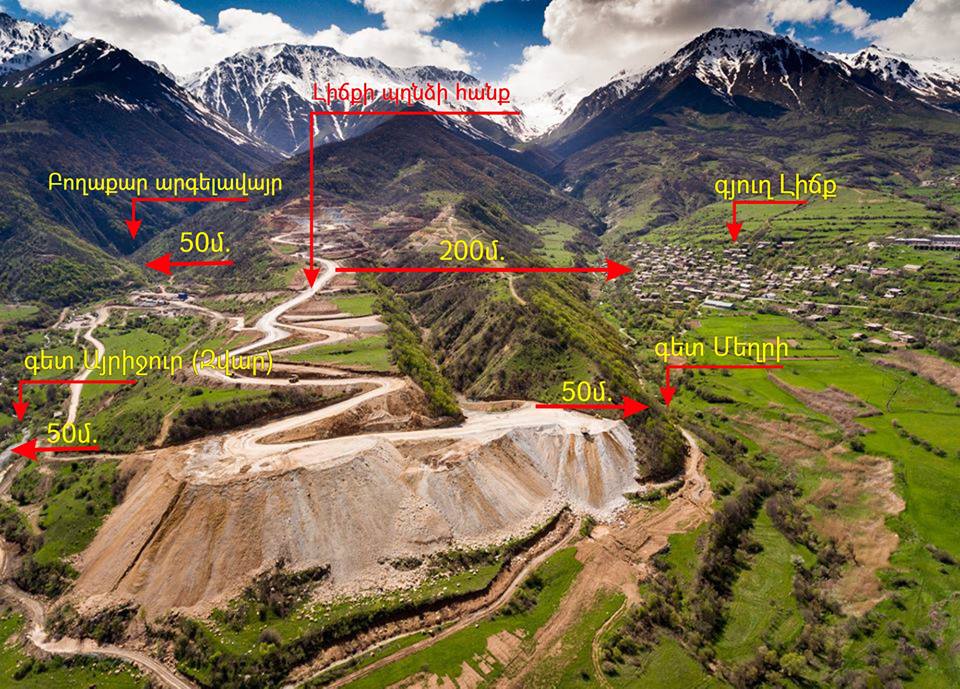
Details of Mine Operation
The documentation on the Lichk mine operation was presented to the Ministry of Environment by “Tatstone” LLC still in 2012. The company received a positive conclusion on the mine operation by the “Environmental Expertise” SNCO of the Ministry of Environment on January 23, 2013 which became deactive beacuse of failure to implement the mine operation program within a year.
According to the “Tatstone” company the mine was not exploited as its reserves were reassessed. Then a new program of the mine operation has been developed and presented to be approved. The company got permission to operate the mine on May 11, 2016.
The mine exploitation was planned to be operated by 2 stages. According to the preliminary application, the productivity of the ore would make 1 mln tonnes per year. The mine would be operating for about 40 years till 2056, and the primary area of operation, which makes 28 hectares, would operate for 12 years, till 2028.

The ore is planned to be transported to “Zangezur” CMC enrichment plant (27.6 km far from Lichk) to produce copper concentrate. And the oxidized ore is planned to be stored because copper extraction is possible only through heap leaching which is not beneficial from the point of view of environment. In both stages of exploitation, the total area for heap should make 34 hectares, and capacity of both heaps-10 mln cubic metres.

According to the official data of 2016-2018yy, “Tatstone” company had 11 employees and paid 86 mln drams (about US$ 180.000) in taxes. However, the Lichk residents note that the number of employees in the mine was much higher.

One of Lichk residents, Gagik Sargsyan (now living in Yerevan) is concerned about the fate of his village. He actively participated in a number of initiatives against the exploitation of the Lichk mine.
In an interview with “Ampop Media” Gagik says that the Lichk mine had up to 120 employees most of which were from ″Zangezur″ CMC. About 20 of them were from Lichq community.
“Even Lichk residents, working in the mine, were considered employees of copper-molybdenum combine,”says Gagik.
According to him at first Lichk residents were against the exploitation of the mine, but then the visit of former governor Surik Khachatryan, member of Republican party, changed the situation. The village inhabitants were made a number of promises.
Many of Lichk residents claim that they were cheated. They were given “a signed paper without any title.” They were said as if it is a paper against the exploitation of the mine, this way the residents were made to sign it. However, in the end the settlers found out that it was a document of agreement.
According to Gagik, there are many questions to be replied to, e.g. what is the connection between “Tatstone” company and “Zanagezur” CPC, what are their working grounds, on which grounds the equipment had been provided, whether there are signed contracts, have any taxes been paid?…
Vera Hovhannisyan, a resident of Lichk community has worked in Meghri Hospital as a health-care worker for 30 years. According to her, Lichk residents have been divided into two camps about the exploitation of the mine.
“Those who are wealthy and have several cars and flats in Yerevan, say that they do not want to be poisoned, hence the mine should not be operated. These people usually visit Lichk only in summers. While the settlers, who are unemployed and not wealthy, hope the mine will operate again,”says Vera. Now she is unemployed as a result of reduction in 2009.
Vera also admits that the residents, whose lands were to be bought by the company, are also in favor of the mine exploitation. But in parallel with the cessation of the mine works, the deal was frozen.
“Some of the community residents have not even been paid for their lands. I have not been paid, either, but I do not want to complain as my only hope to find a job is the reopening of the mine,” says Vera.
According to Vera Hovhannisyan, when the mine was operating, the number of Lichk residents increased at the expense of the mine staff. “People from different parts of Syunik came and were living in the village, because their job was there,”says Vera.
After the cessation of the mine exploitation, the village was again emptied. Some found new jobs in the Meghri and Kajaran mines and relocated, no longer waiting for the reopening of the Lichk mine. While, according to the data of the Statistical Committee, the population of Lichk has grown over the last three years.

However Gagik Sargsyan claims that whenever the company tries to exploit the mine, the locals will definitely fight against it.
“People will take to the streets and even block the road.”
A council member of Meghri community Karen Adamyan agrees with Gagik.
“Meghri residents unanimously oppose the exploitation of the mine, which is stated by the signature collection – 3500 signatures in two days. It is submitted to the Prime Minister stating that Meghri residents do not want any other mine to be exploited in their province,”he said.
While according to Adamyan, in the community municipality there is still disagreement over the mine operation. Each council member has their own point of view.
Reject of Water Use
Some months after the cessation of the mine exploitation, in January 2019, the company applied to the Water Resources Management Agency of the Ministry of Nature Protection aiming at getting the permission for 2,09 l/s water abstraction from the Ayrijur tributary of the Meghri River (Zvartaget). However, at the beginning of February the company was rejected until inspections were carried out.
By the way, “Tatstone” LLC did not have any permission for water use in the past. The Environmental and Soil Inspection noted it as a response to the written inquiry of “Ampop Media.”
“On the basis of the letter of the Deputy Minister of Nature Protection, on February 11, the Syunik Department of the Environmental and Soil Inspection initiated administrative proceedings against Samvel Tatevosyan, director of “Tatstone” LLC for using water without any permission. A fine has been imposed,” runs the letter.
Just in the same month, in January, the media shared the news that the company wished to resume the exploitation of the mine. In August 2019, “Ampop Media” sent a written inquiry to the Ministry of Nature Protection in regard with the mine reopening. In response to the inquiry, the Ministry noted that
“Tatstone” LLC had not submitted any bid on reopening the mine.
In an interview with “Ampop Media” the council member of Meghri community Karen Adamyan noted that the results of the administrative inspections, which initiated at the beginning of this year, are not known yet.
Impact on the Environment
Still in 2016, the “Aarhus” center in Armenia made studies to identify the potential environmental impact of the Lichk copper mine operation. In particular, a number of shortcomings have been pointed out.
According to the experts, the mine may affect the Meghri River and fresh water of the community. Hence, there is a need first to make a total and entire study to determine the impact on the qualitative and quantitative characteristics of the water.
This is also stated by Adamyan: “The source of Meghri water, from where the abstraction starts towards the cleaning plant, is only 200 metres far from the mine, and of course it will have a negative impact.”
Besides, in the study of the “Aarhus” center it is noted that the impact risks on crops and climate have not been calculated.
“Arevik” National Park is located 700 metres far from the mine. It has an area of more than 30300 hectares. Rare and extinct types of wild nature are a subject of special attention. Here a striped hyena have been found, which is included in the Red Book of Armenia.

The report runs that if the mine is exploited, the populations of the listed plant types will come into serious risk because of degradation or reducing areas.
It should be noted that according to the decision of the RA Government on July 2, 2015, the area of the Zangezur Biosphere Complex of the Ministry of Environment (Nature Protection) has been expanded due to the reduction of the “Arevik” National Park area.
Its borders are not clearly defined. This fact is used by mining companies. There is only a suggested demarcation.
The “Boghakar” Reserve, 50 metres far from the mine, is also endangered. It was created with the aim to save endemic and rare types of flora and fauna.
Trial Against Mine Exploitation
On December 13, 2016, the Armenian Administrative Court accepted the appeal of “Environmental Law” NGO against the Ministriy of Nature Protection and the Ministry of Energy Infrastructures and Natural Resources of the Republic of Armenia, demanding to declare void the “documents underlying in the permission to operate” Lichk Mine in Syunik. [ed: a document that has no legal force and is not subject to judicial review].
According to the documents attached to the claim:
The stripped area of Lichk Mine partly lies in the territory of “Arevik” National Park, where the mine operation in a stripped way is forbidden by the RA law on “Specially Protected Nature Areas.”
A member of the “Environmental Law” NGO Artur Grigoryan, managed to become head of Environmental Protection and Mining Inspection body shortly after the velvet revolution in 2018. In an interview with “Ampop Media” he noted that the judicial process is not over yet, but at current no proceedings are underway.
“The court once obliged the Ministries of Nature Protection and Energy to provide clear mapping data on the boundaries of “Arevik” National Park, but the latters are not presented yet,” says Grigoryan.
According to him there a clear demarcation line should be established to determine whether the Lichk mine is in the territory of “Arevik” ational Park in any way or not.
The “Environmental Law” NGO has been involved in a number of litigation in recent years: Lichq, Amulsar, Teghut. According to Grigoryan, in all cases, except for Teghut, the legality of the expert conclusion has been largely disputed. That is to say, before making an activity, the company must have a positive expert conclusion, which must be valid.
“As a result of the study, we have found that these expert conclusions are not valid and legitimate. That is to say, the subject of their legality was disputed. And, as the Lichk mine was partially located in the territory of ″Arevik″ National Park, it had an impact on the park area, so it might not have a positive conclusion”.
Conclusion
Among the diseases spread in the Meghri region are the diseases of the circulatory system, mainly hypertension and myocardial infarction. By the way, in 53% of deaths these diseases are mentioned.
The health-care workers have no grounded reply whether this is related to the mines near Meghri or not. However, according to the data provided to “Ampop Media” by the RA Statistical Committee, only in 691 death cases out of the 1300 registered ones in the last 10 years (2008-2018), the mentioned diseases were the cause of death.

Article and Infographics by Gayane Melikyan
Photos by Arpi Adamyan
Raf Engibaryan contributing this story
Translated by Mary Grigoryan
Responsible Editor Suren Deheryan
For Armenian original CLICK HERE
© The copyright of stories and visualizations on Ampop.am belongs to “Journalists for the Future” NGO. It is forbidden to use Ampop’s content and images without active hyperlinks to the source website. Uploading of infographics and images of Ampop.am is possible only in case of an agreement reached with JFF.
Փորձագետի կարծիք
First Published: 22/11/2019





